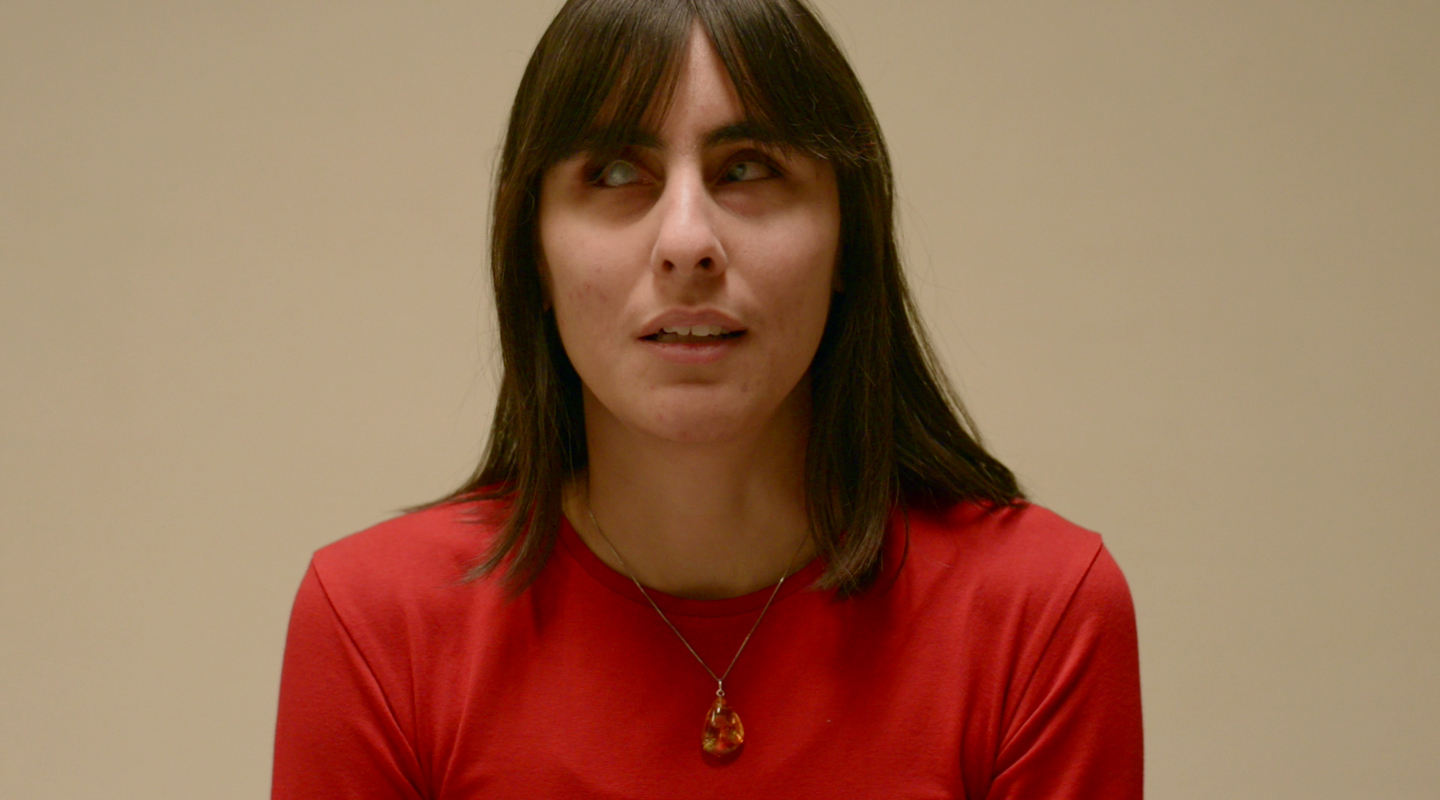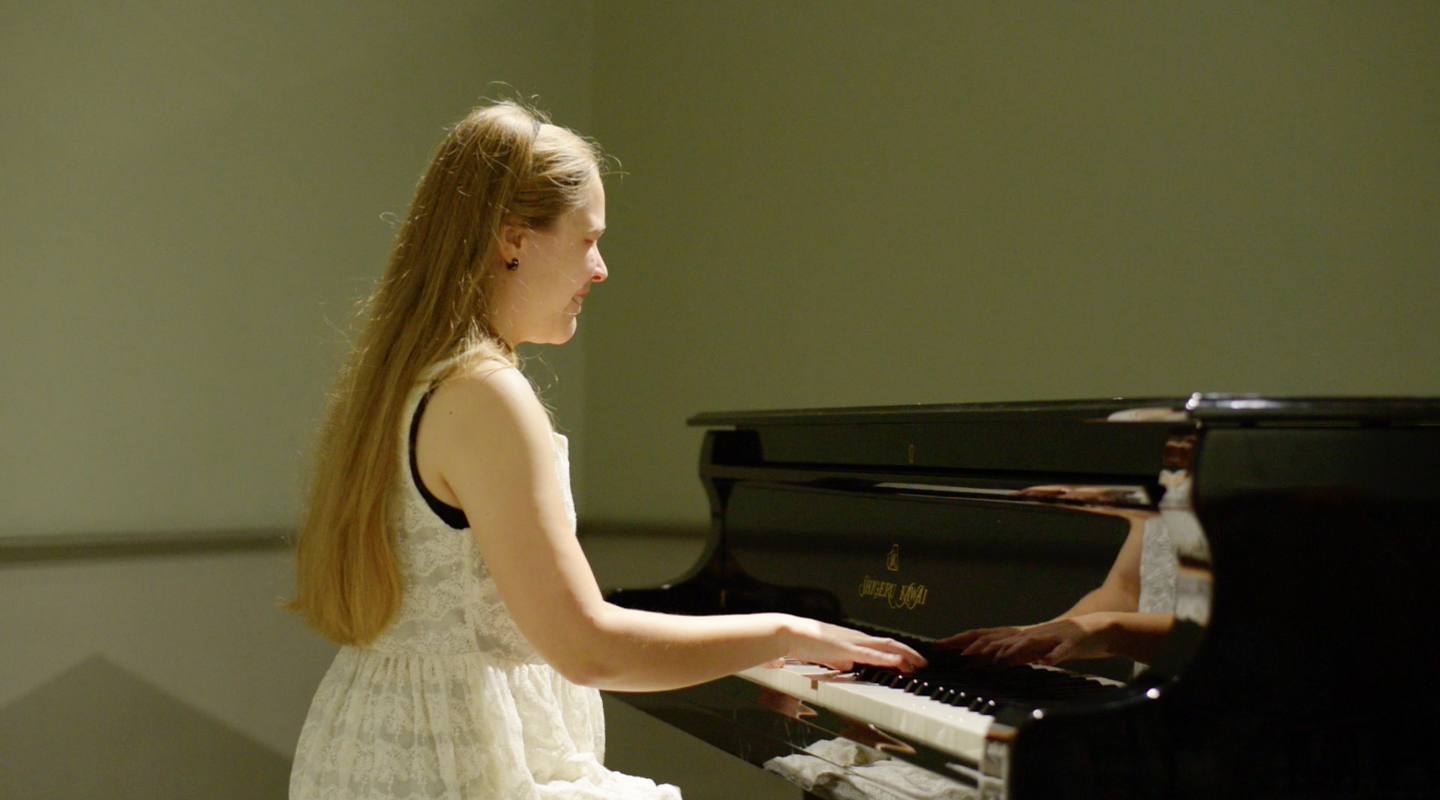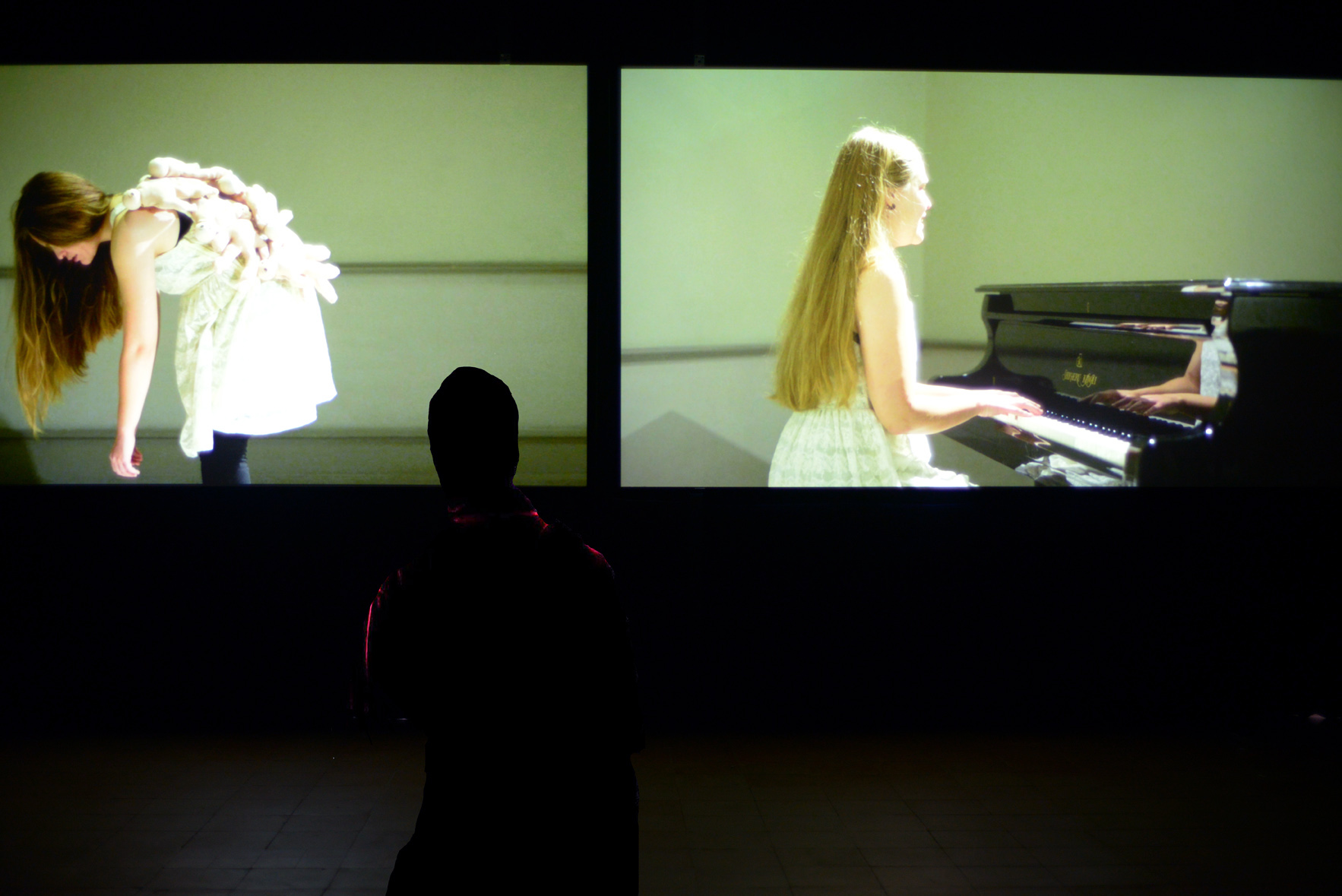A Romantic Notion Of Blindnes
2014
HD Video 10.00 min.
Director Steinbock
Cinematographer Steinbock and Morten Lundrup
Editor Frederikke Friderichsen
Cast Nina Schneidermann, Osman Sari and Methap Demirkaya.
The
mobile diptych consisting of a dual-channel video projection gives a voice to
three blind individuals, who present themselves to the camera. Through song and
narrative, they convey sensual, erotic preferences – considerations about
gender representations and the mere experience of not being able to see when
you open your eyes. The challenge of eating a sandwich as a blind person
becomes a lyrical documentation of an everyday situation marked by both
loneliness and decisiveness. The young man's narration of being attracted to
the scent of hair and soft body contours is countered by a woman in a red dress
contemplating femininity. Not that she cares whether her thoughts are obvious
to others. The more we see, the more the eye is guided away from the visual
field into the world of senses related to kinesthetics and tactility. As
is so often seen in Steinbock's works, cinematographic elements carry the
intensely picturesque and sculptural imagery of the work. Hence, the diptych
constantly creates an active performance while at the same time conjuring up an
avid sculpture, a breathing image. These almost still images, whose subtle
movements can be likened to the strokes of a painting, a sculpture or a
photograph, serve as silent comments on the very active aspects of the work.
Thus, the image of the girl leaning forward, with dolls sewn onto her back
functions as a key to the girl's background, hinting to her imaginary childhood
friends, interpreted as blind, contemplative reflections of herself. And she
carries them silently while the parallel projection shows her singing in a
resounding voice at a piano. The introverted image of the same girl, whose
incessant smile accompanies the love songs performed by the young man, is an
indirect response to his song: the girl imagines how it would be if a man sang
to her. The qualitative interview method in which the informant is invited to
tell the story of an aspect of life is thus lightly interwoven with visually
aesthetic elements, symbolism, imagery and tableaux vivants. In this manner,
documentary qualities are e
mphasized along with inner experiences, such as how
to present yourself visually to each other in a scenario where blindness is a
circumstance.










